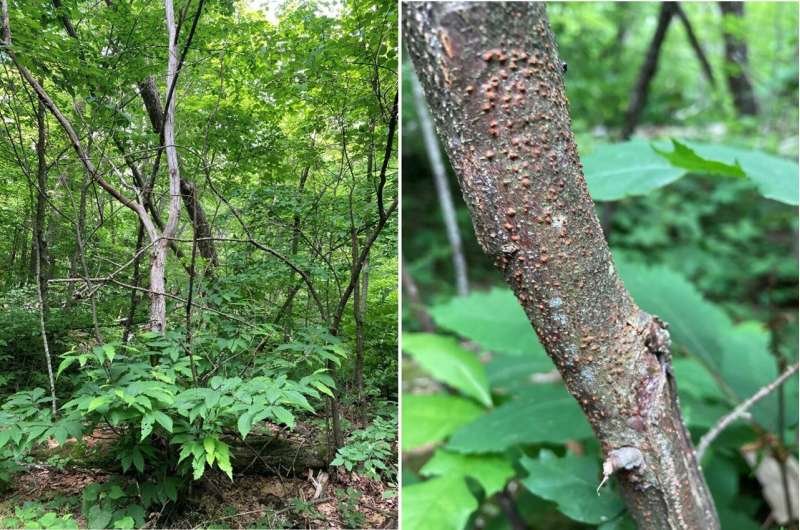An entomologist and his ecologist daughter have uncovered the dramatic changes that have reshaped the forests of White Oak Canyon in the Shenandoah National Park over the past half-century, all due to the devastating impact of a canker fungus. This captivating story highlights the profound influence that fungal infections can have on a forest ecosystem. Shenandoah National Park, chestnut blight.

A Forest Transformed: Uncovering the Fungal Footprint
In the 1920s, researchers surveying the forest at White Oak Canyon in the Shenandoah National Park noted that chestnuts and oaks were the dominant canopy trees. Decades later, in 1950, botanist and ecologist Lucy Braun described the same forest, again highlighting the dominance of oak and chestnut trees.
Fast forward to 1977, when entomologist Richard Karban surveyed the forest and found it largely unchanged from Braun’s description. However, when Karban returned to the forest in 2021, this time with his ecologist daughter Claire, they were surprised to find that the landscape had undergone a fundamental transformation. The culprit? A canker fungus known as Cryphonectria parasitica, which had devastated the chestnut population, leaving the forest to respond and adapt to the sudden absence of a dominant tree species.
Slow but Steady: The Forest’s Adaptive Response
The researchers noted that the forest’s response to the loss of the chestnut trees has been surprisingly slow. Instead of oaks taking over as the sole dominant large tree, smaller species, such as birch, have begun to fill the gaps. This gradual change suggests that the forest ecosystem is struggling to adapt to the dramatic shift in its canopy composition.
Interestingly, the researchers found that not all traces of the chestnut tree have vanished. Some have reverted to a shrub-like form, a testament to the resilience of this once-dominant species. The Karbans plan to continue studying the forest, hoping to unravel the reasons behind the delayed response and understand how other factors, such as the increase in the deer population and the absence of large fires, might be influencing the forest’s recovery.
Lessons Learned: Documenting the Impact of Fungal Outbreaks
The Karbans’ study serves as a poignant reminder of the profound impact that fungal infections can have on forest ecosystems. By documenting the dramatic changes that have occurred in White Oak Canyon over the past half-century, their work highlights the need for vigilance and proactive measures to address the threat of fungal outbreaks.
As the researchers plan to continue their investigation, their findings will undoubtedly provide valuable insights that can inform forest management strategies and help other communities prepare for the potential consequences of similar fungal invasions. This study serves as a powerful example of how rigorous scientific research can shed light on the intricate interactions between forests and the various biotic and abiotic factors that shape their evolution over time.
